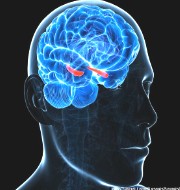Tourette Syndrome
Lewis Capaldi is a Scottish singer. Recently, he faced difficulties in singing during his live show. His fans completed the song for him while he was struggling to form tones. The singer has been suffering from Tourette Syndrome. It is a nervous disorder. The syndrome develops during childhood or adolescence. It causes tics, meaning multiple repetitive movements. The common tics that develop in Tourette syndrome are coughing, blinking, sniffing, throat clearing, and facial movements.
Classification of Tourette Syndrome
The ICD-11 of the WHO puts Tourette syndrome into the category of neurodevelopmental disorder. It means there is some problem in the development of nerves. Now, what is ICD-11? International Classification of Diseases. The WHO prepares a list of ICDs now and then. The last list was created in 2019 and it came into effect in 2022. ICD categorizes diseases based on symptoms, social circumstances, complaints, and several other factors. Based on these parameters it generates a six-character long code. This is done to help the policymakers, international platforms work towards their elimination.
Characteristics of Tourette Syndrome
Tics are the major characteristics of Tourette syndrome. Here, sounds or movements unpredictably. It is not a thick mouth where people face difficulties in pronouncing certain sounds. Rather, it is a movement disorder.
Actions produced during tics are semi-voluntary. And not involuntary. Involuntary actions occur without the willingness of the individual. He or she is not conscious of the action.
Causes
Scientists are yet to find out the real cause of the syndrome. However, research proves that the disease is genetic. Environmental factors have a huge role in the disease.
Mechanism
Persons suffering from Tourette syndrome have dysfunction in subcortical and cortical regions of the brain. The cortical region means the cortex. Cortex has a huge role in brain functions such as memory, reasoning, emotions, etc.
Patients suffer from the disease even when there are obstructions in the CSTC circuits. The CSTC act as a link, connecting the cortex to the thalamus and basal ganglia. Thalamus helps in sleeping and waking up. It is also important for memory and learning. Basal Ganglia are responsible for your voluntary actions. Voluntary movement is those actions that a person does cautiously.
Breathing, digestion, eye reflexes, etc are involuntary movements. Moving your hands and legs, sitting, standing are involuntary movements.
Treatment
There is no cure for the disease. Also, there are no prescribed medicines for the disease.
Month: Current Affairs - March, 2023
Category: Science & Technology Current Affairs


